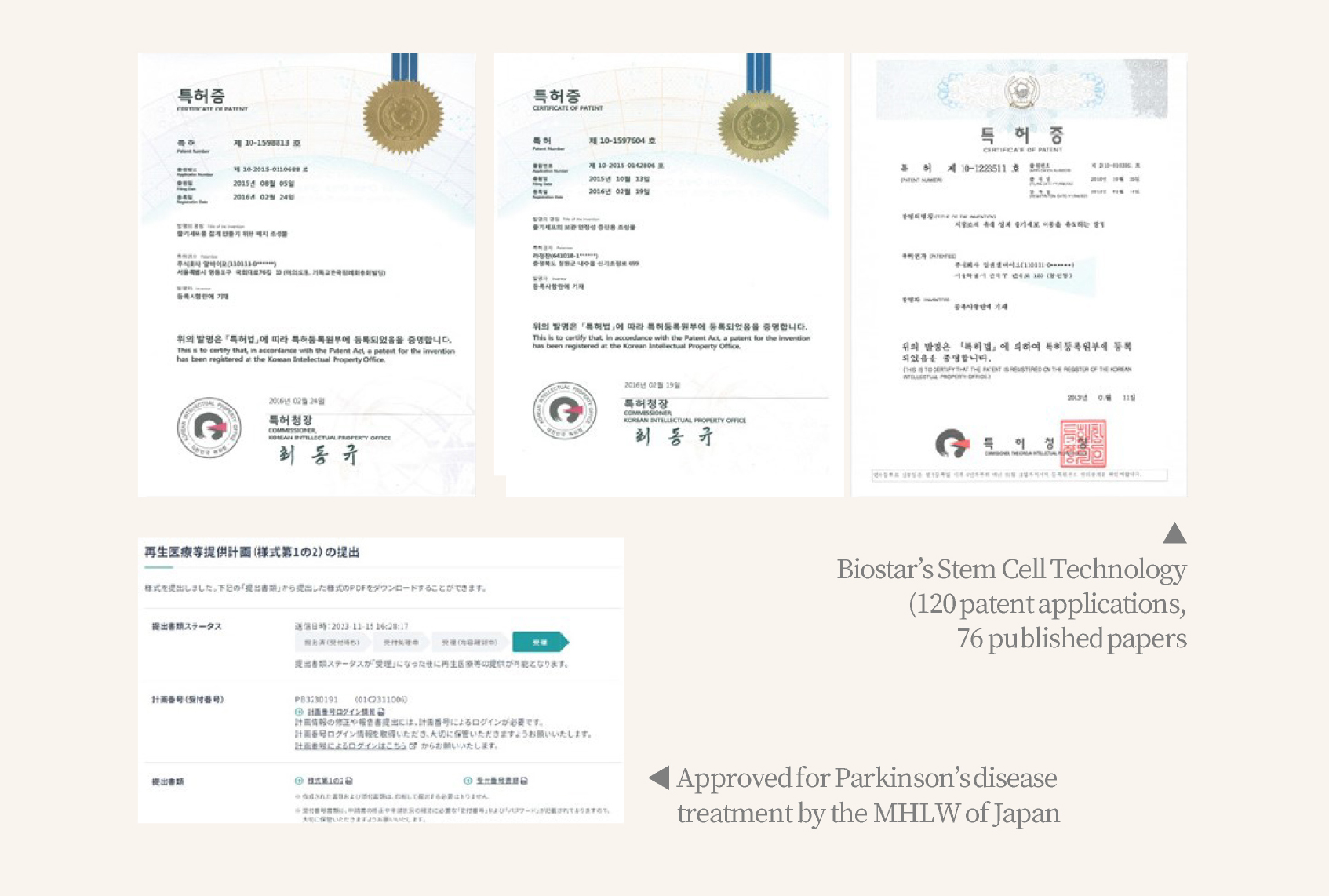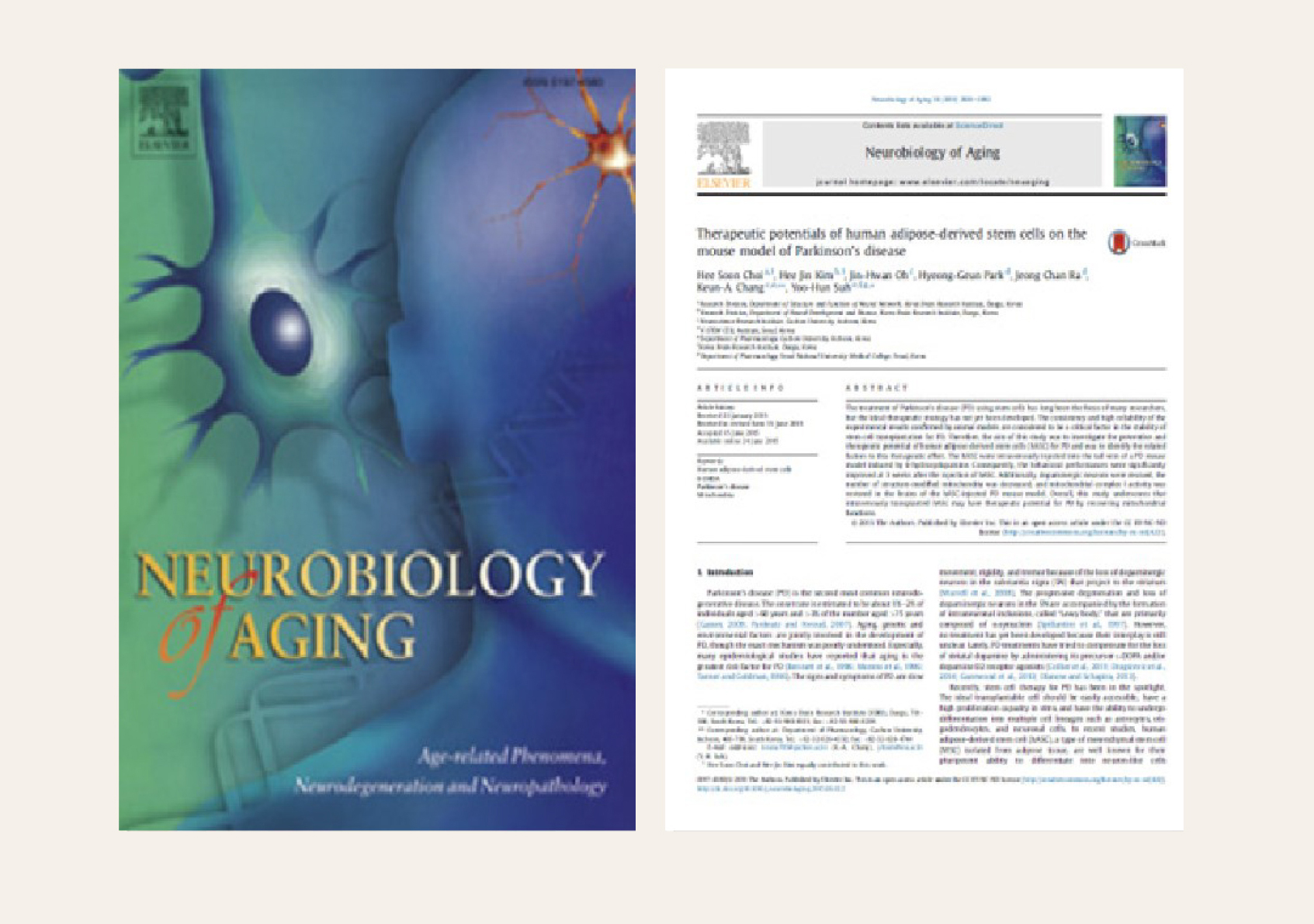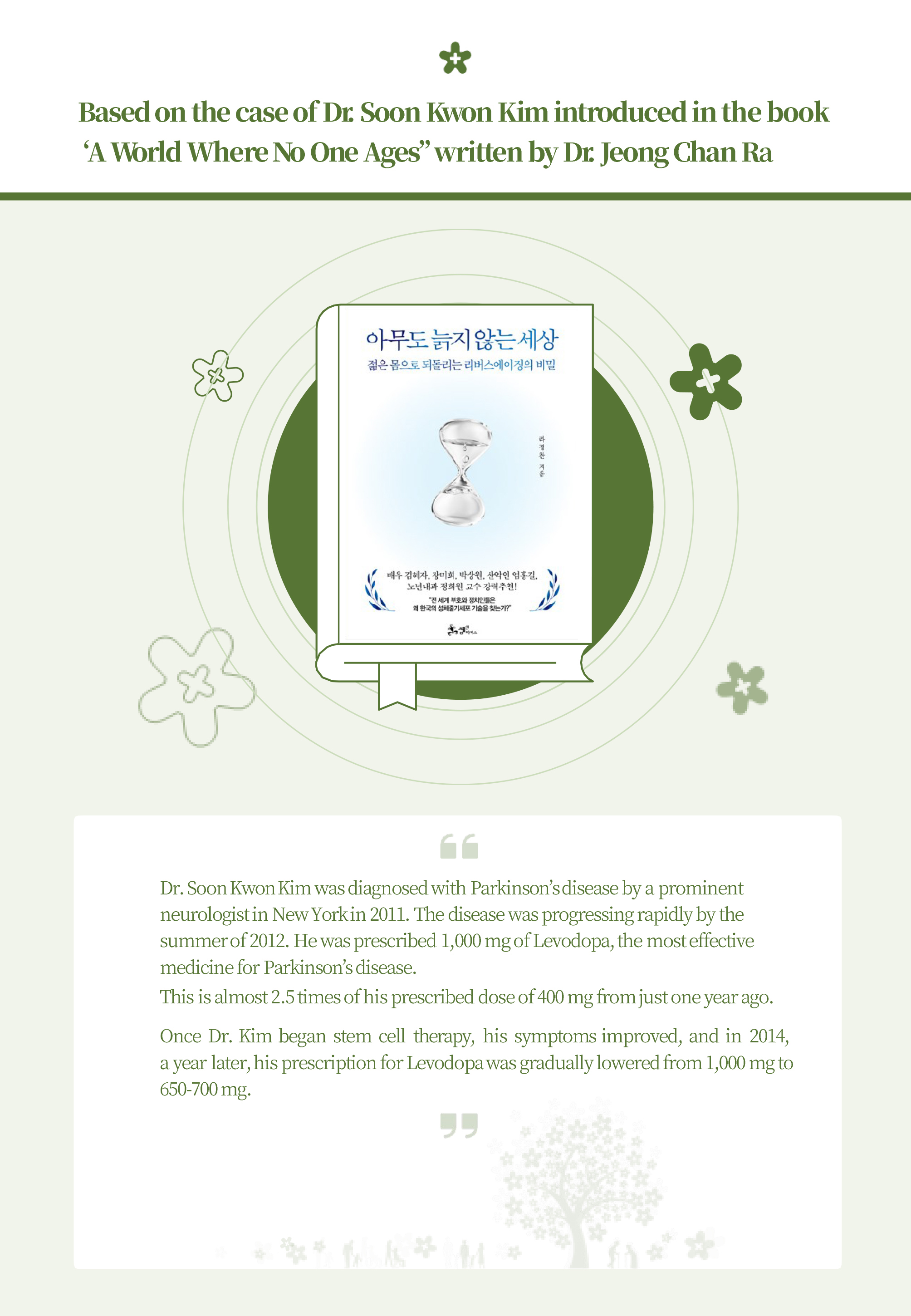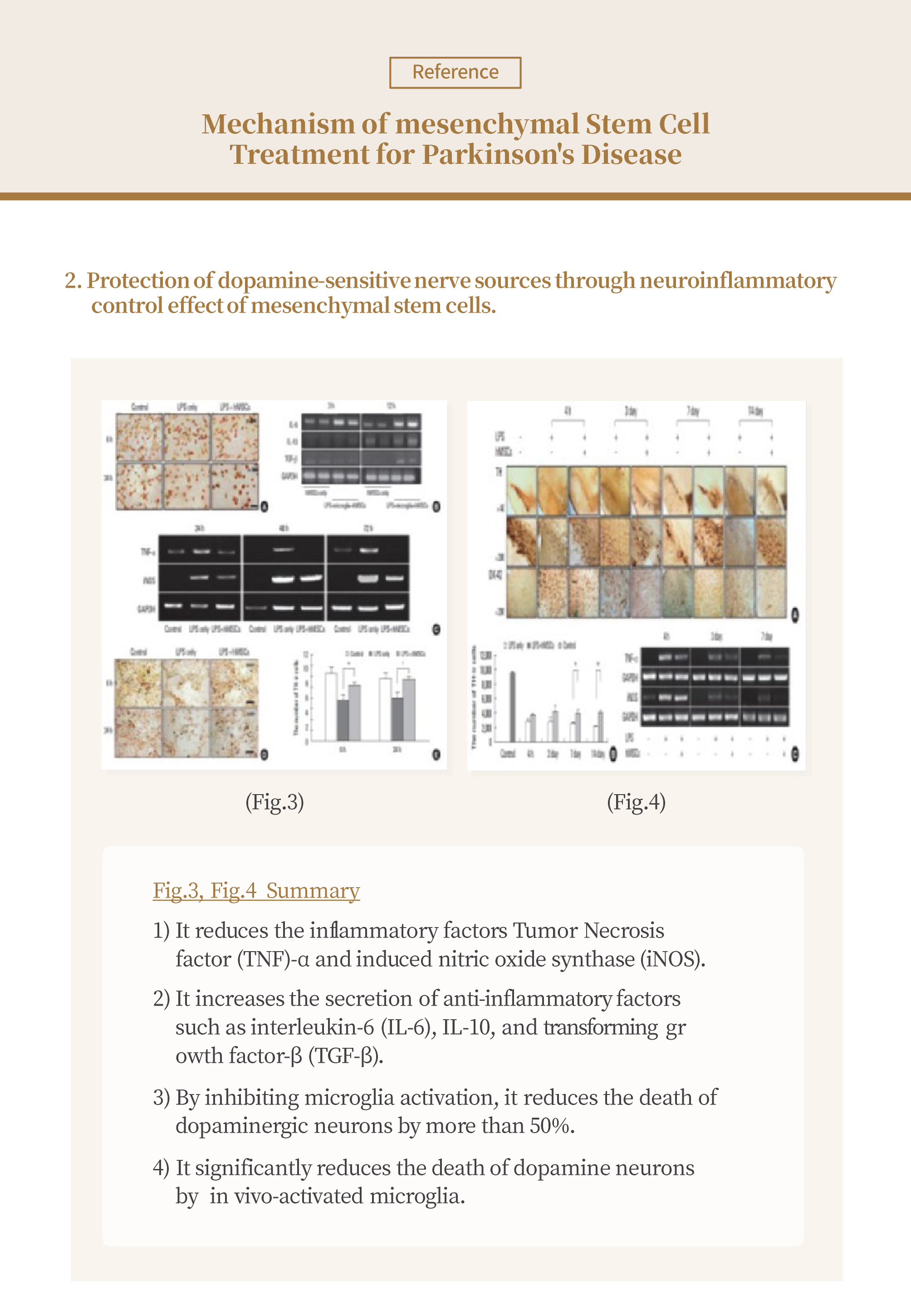

This is the first case in which a treatment for Parkinson’s disease has been approved using administration of Intravenous and intrathecal route with autologous adipose-derived stem cells.
Biostar Stem Cell Research Institute has over 20 years of clinical practice in stem cell culture technology.
The patented technology worldwide consists of cultivating stem cells to be younger and smaller in size suitable for intravenous administration, improving the homing effect of stem cells and cancer inhibition.
When stem cells are administered intrathecally along with intravenous administration, more stem sells can migrate to the brain lesion area and increase regenerative action, thereby increasing the treatment effect.

The safety of intrathecal administration was confirmed in 70 patients with neurodegenerative diseases, including Parkinson’s disease, in Japan and China from 2009 to 2017.
Blood tests and various data have proven that intrathecal and intravenous administration of stem cells is sage even after repeated administration of stem cells up to 25 times intrathecally in 70 patients, including Parkinson’s disease patients.


Intravenous administration of human adipose derived stem cells was applied to the brain of an animal model of Parkinson’s disease where dopamine-like neurons were restored, the number of mitochondria with altered structure was reduced, and mitochondrial complex I activity was restored. In addition, the improvement in behavioral ability was confirmed at 3 weeks of stem cell administration.
The possibility of stem cell treatment for Parkinson’s disease has been confirmed from the mitochondrial function of brain neurons being restored through the intravenous administration of human adipose-derived stem cells.
Therapeutic poentials of human adipose-derived stem cells on the mouse model of Parkinson’s disease Neurobiol Aging. 2015 Oct;36(10):2885-92.
Choi HS, Kim HJ, Oh JH, Park HG, Ra JC, Chang KA, Suh YH.








Most Commented